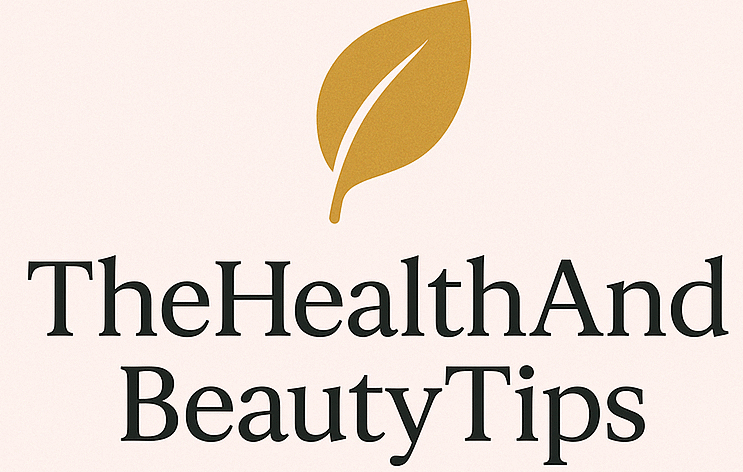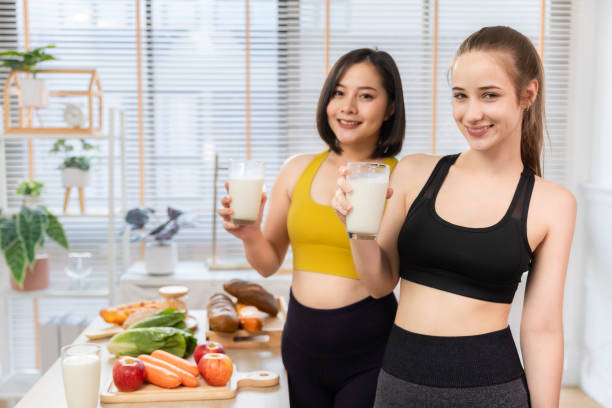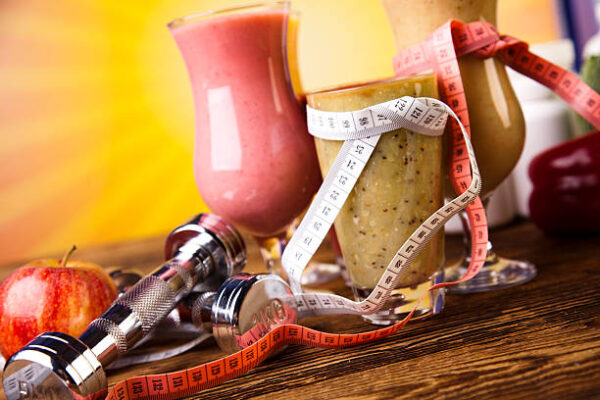Finding time to cook balanced meals every day can feel impossible, especially if you’re juggling work, family, and a busy schedule. That’s where meal replacement shakes for weight loss come in. These shakes are designed to provide the nutrients of a full meal—protein, healthy fats, fiber, and essential vitamins—in a single, convenient serving. Unlike a basic protein shake, which usually focuses only on muscle recovery, a meal replacement is formulated to support both calorie control and satiety, two essentials for successful weight management.
People turn to these shakes for different reasons. Some want a quick breakfast solution that’s higher in protein than cereal or toast. Others use them to replace a heavy lunch and cut calories without feeling deprived. And for anyone working toward a high-protein diet or trying to avoid snacking on processed foods, shakes can offer a structured way to stay on track.
That doesn’t mean every product on the shelf is a smart choice. With options ranging from premier protein shakes to plant-based powders marketed as the best vegan protein powder, the challenge is knowing what actually works. This guide will break down the benefits, drawbacks, and science behind meal replacement shakes—so you can use them effectively without relying on hype.
What Are Meal Replacement Shakes for Weight Loss?
At their core, meal replacement shakes for weight loss are formulated beverages designed to substitute one or two of your daily meals while helping you stay within a calorie deficit. Unlike a typical protein shake, which is usually just protein powder mixed with water or milk, a true meal replacement is meant to act more like a balanced plate in a glass. That means it should include a blend of protein, fiber, healthy fats, and sometimes added vitamins and minerals.
You’ll find them in two common formats: ready-to-drink bottles (RTDs) and powdered mixes. Premier Protein shakes and Fairlife protein shakes, for example, are popular RTD options that require zero prep—perfect if you’re always on the go. Powders, on the other hand, give you flexibility. You can mix them with water for a quick fix or blend them into smoothies with fruit, oats, or nut butter to make a more filling meal.
The key advantage is convenience. For people trying to stick to a high-protein diet or manage calorie intake, these shakes eliminate the guesswork. Instead of reaching for fast food or skipping meals, you have a portion-controlled option that keeps you satisfied.
Still, not all shakes are created equal. Some are little more than sugary drinks dressed up as health products, while others meet the criteria of a complete, nutrient-dense meal. In the next section, we’ll explore the real benefits—and limits—of relying on meal replacement shakes for weight loss
Benefits of Meal Replacement Shakes for Weight Loss
The biggest reason people turn to meal replacement shakes for weight loss is convenience. In today’s world, sitting down to a balanced meal isn’t always realistic. These shakes give you a quick, portion-controlled way to manage calories without sacrificing nutrition. When used strategically, they can support a structured approach to weight management.
1. Built-in Calorie Control
Weight loss often comes down to creating a sustainable calorie deficit. A well-formulated shake takes the guesswork out of portion sizes and hidden calories. Instead of underestimating the calories in a fast-food lunch, you know exactly what you’re getting—usually between 200 and 400 calories per serving. This makes them easier to fit into a daily plan than most grab-and-go options.
2. Protein Keeps You Satisfied
High-quality protein is one of the most effective nutrients for controlling appetite. A shake with 20–30 grams of protein not only supports muscle preservation but also keeps hunger in check for hours. That’s why swapping a sugary breakfast for a high-protein breakfast shake can make a noticeable difference in reducing mid-morning cravings.
3. Supports a High-Protein Diet
Many diets fail because people don’t eat enough protein. Incorporating one or two shakes daily ensures consistent intake. This makes them a helpful tool for anyone following a high-protein diet, whether for fat loss, fitness, or maintaining lean muscle.
4. Convenient for Weight Loss Goals
Whether you’re choosing protein powder for weight loss to blend at home or grabbing a bottled option like Premier Protein shakes, the convenience factor can’t be overstated. They travel well, reduce decision fatigue, and give you confidence that you’re making a better choice than skipping meals or reaching for snacks.
Potential Downsides and Safety Considerations
While meal replacement shakes for weight loss can be helpful, they’re not a perfect solution. Like any tool, they work best when used wisely and with an understanding of their limits.
1. Hidden Sugars and Additives
Not every shake is created with health in mind. Some popular products contain added sugars, artificial flavors, or fillers that can undermine your goals. Even if a label says “high protein,” you’ll want to check the full nutrition facts. A true replacement should provide a balance of protein, fiber, and healthy fats—not just sweetened calories.
2. Over-Reliance on Shakes
Replacing one or two meals a day is reasonable, but depending exclusively on shakes isn’t sustainable long-term. Whole foods provide phytonutrients, antioxidants, and natural fiber that powders or ready-to-drink bottles can’t fully match. Even the best protein shakes should complement, not replace, a diet built around whole fruits, vegetables, lean proteins, and whole grains.
3. Digestive and Allergy Concerns
Some people experience bloating, cramps, or discomfort from whey-based products, especially if they’re lactose intolerant. In these cases, exploring whey vs plant-based protein can make a big difference. Plant-based options—like pea or soy—are often easier on digestion while still supporting weight loss goals.
4. Not for Everyone
Children, pregnant women, or those with chronic conditions should consult a healthcare provider before using shakes regularly. For them, nutrient-dense whole foods remain the safest choice.
In short, shakes can simplify calorie control, but relying on them too heavily or picking poorly formulated options can backfire. Next, let’s look at the different types of meal replacement shakes for weight loss and how to choose one that fits your needs.
Types of Meal Replacement Shakes for Weight Loss
When it comes to meal replacement shakes for weight loss, not all options are the same. Understanding the different types will help you choose one that fits your goals, preferences, and dietary needs.
Whey-Based Shakes
Whey protein remains one of the most popular choices. It’s a complete protein, rich in essential amino acids, and absorbed quickly by the body. Shakes like Gold Standard Whey Protein or Premier Protein shakes are common options for people who want fast-digesting protein that supports muscle repair and satiety. These are especially effective post-workout but can double as a meal replacement if they include added fiber, healthy fats, and micronutrients.
Casein-Based Shakes
Casein is another milk-derived protein, but it digests much more slowly than whey. This makes casein shakes useful for extended satiety—for example, replacing dinner or keeping you full overnight. While they’re less common in ready-to-drink form, casein powders can be blended into a satisfying, nutrient-dense shake when paired with oats, nut butter, or fruit.
Plant-Based Shakes
For those who are lactose intolerant, vegan, or simply prefer plant nutrition, there are plenty of plant-based options. Pea protein, soy, and blended plant proteins provide strong amino acid profiles that rival dairy-based shakes. Choosing the best vegan protein powder ensures you get complete protein plus additional nutrients. If you’re looking to buy vegan protein powder, check for blends that include fiber and healthy fats—these mimic the structure of a full meal more effectively than plain protein powders.
Ready-to-Drink (RTD) Shakes
If convenience is your top priority, RTD shakes like the Fairlife protein shake can be a lifesaver. They’re pre-mixed, portable, and require zero prep, making them ideal for busy mornings or travel. Just be sure to check the label for sugar content and overall calorie balance.
Whey vs. Plant-Based Protein
The choice between whey vs plant-based protein often comes down to personal tolerance and dietary style. Whey offers fast absorption and muscle recovery benefits, while plant-based shakes are easier on digestion and align with vegan or vegetarian lifestyles.
By knowing these categories, you can match a shake to your goals—whether that’s fat loss, muscle preservation, or simply convenience—while avoiding products that fall short nutritionally.
How Much Protein Do You Need for Weight Loss?
One of the most common questions around meal replacement shakes for weight loss is: how much protein do you really need? The answer depends on your body weight, activity level, and overall diet.
For the average adult, nutrition experts recommend between 1.2 and 2.0 grams of protein per kilogram of body weight per day when the goal is fat loss while preserving lean muscle. That means a 70-kg (154-lb) person should aim for roughly 85–140 grams of protein daily. Athletes or people following a strict high-protein diet may benefit from staying at the higher end of that range.
This is where shakes can play a practical role. A well-formulated protein powder for weight loss typically provides 20–30 grams of protein per serving. That’s about one quarter of the daily target for many people. Using one or two shakes per day makes it easier to stay consistent without having to rely only on chicken breasts, eggs, or tofu.
It’s also important to remember that protein needs should be spread throughout the day. Aiming for 20–40 grams per meal helps optimize satiety and muscle preservation. For example, you might start with a high-protein breakfast shake in the morning, enjoy a balanced lunch with lean protein, and then have another shake as a dinner replacement or post-workout option.
Best Timing to Use a Meal Replacement Shake
When it comes to meal replacement shakes for weight loss, timing matters. While you could technically have one anytime, certain situations make them especially effective.
Morning Kickstart
Breakfast is the most common swap. Many people either skip it or reach for quick carbs that leave them hungry an hour later. Replacing it with a high-protein breakfast shake provides sustained energy and helps control cravings throughout the morning. This simple change often sets the tone for smarter choices the rest of the day.
Post-Workout Recovery
After exercise, your body needs protein to repair muscle and carbohydrates to restore energy. Choosing protein shakes for weight loss as a post-workout meal replacement ensures you’re refueling efficiently without overshooting your calorie goals. Look for options with both protein and fiber to balance recovery and satiety.
Lunch or Dinner Swap
Busy schedules or social temptations can make lunch and dinner calorie-heavy. Replacing one of these meals with a shake is an easy way to stay within your target calorie range. Ready-to-drink options like Fairlife protein shake or customizable powders are particularly helpful here.
Ultimately, there’s no single “perfect” time. The best approach is to use shakes strategically—when you’d otherwise skip a meal, eat something processed, or overeat. Done consistently, this structure helps keep weight loss both manageable and sustainable.
How to Choose the Right Meal Replacement Shake for Weight Loss
Not all meal replacement shakes for weight loss are created equal. The right one can keep you full, support muscle preservation, and help you stick to your calorie goals—while the wrong one can leave you hungry or overloaded with sugar. Here’s what to look for.
1. Protein Content: Aim for at least 20–30 grams of protein per serving. This amount supports satiety and helps maintain lean muscle during calorie restriction. Whether you prefer whey-based options or decide to buy vegan protein powder, make sure the shake delivers complete protein.
2. Calorie Balance: A proper meal replacement should fall in the 200–400 calorie range. Anything less won’t keep you satisfied; anything more may overshoot your calorie target unless used strategically.
3. Carbs and Sugar: Look for a low-sugar protein shake, ideally with less than 7–8 grams of added sugar. Carbs aren’t bad—especially if they come from fiber or whole food sources—but excessive sugar can sabotage weight loss.
4. Added Nutrients: The best protein shake for weight loss includes vitamins, minerals, and fiber to mimic a full meal. Fiber in particular (around 5–10 grams) slows digestion and helps control hunger.
5. Targeted Formulas: Some products are tailored to specific needs. For example, protein powder for women may include added iron or calcium, while others are fortified with probiotics or superfoods. Consider what aligns with your health priorities.
DIY Meal Replacement Shakes at Home
While store-bought meal replacement shakes for weight loss are convenient, making your own at home can be just as effective—and often healthier. With the right ingredients, you can control calories, boost nutrition, and save money at the same time.
Why Go DIY?
Homemade shakes give you full control over what goes into your glass. Many ready-to-drink options contain added sugars, preservatives, or artificial flavors. By blending your own, you can keep things clean and tailor them to your specific goals—whether that’s higher protein, more fiber, or plant-based nutrition.
Core Ingredients for a Homemade Protein Shake
Protein Base: Start with protein powder for weight loss, such as whey, casein, or a plant-based option like pea or soy protein.
Fiber & Satiety Boosters: Add oats, chia seeds, or flaxseeds to keep you full longer.
Healthy Fats: A spoonful of nut butter or avocado adds creaminess and helps regulate appetite.
Fruits & Veggies: Frozen berries, spinach, or bananas improve flavor while supplying vitamins and minerals.
Liquid Choice: Water, almond milk, or low-fat dairy keep the shake light while blending smoothly.
Sample Smoothie Recipes for Weight Loss
Berry Almond Shake: Whey protein, unsweetened almond milk, frozen berries, flaxseed, and a teaspoon of almond butter.
Green Energy Shake: Pea protein, spinach, banana, chia seeds, and oat milk.
Chocolate Peanut Butter Shake: Casein protein, unsweetened cocoa, peanut butter, and low-fat milk.
Budget-Friendly Tip: Buying bulk protein powder for weight loss and mixing it with whole food ingredients at home is usually cheaper than pre-made shakes.
DIY shakes not only help with portion control but also make the process of losing weight more enjoyable and sustainable.
Potential Drawbacks and Side Effects
Although meal replacement shakes for weight loss can be effective, they aren’t without limitations. Understanding the possible downsides ensures you use them wisely and safely.
1. Nutrient Gaps
Even the best shakes may not provide all the micronutrients of a whole-food meal. Relying too heavily on shakes could lead to deficiencies in fiber, antioxidants, or healthy fats—nutrients you’d normally get from vegetables, fruits, and whole grains.
2. Digestive Issues
Some people experience side effects from protein shakes, such as bloating, gas, or stomach cramps. This is often due to added sweeteners, lactose, or certain types of protein (like whey concentrate). Switching to lactose-free or plant-based powders can help minimize discomfort.
3. Overreliance
Shakes are designed as a tool, not a total replacement for balanced eating. Depending on them for every meal may create unhealthy habits or make it harder to transition back to a whole-foods diet. Long-term success requires combining shakes with nutrient-rich meals.
4. Hidden Ingredients
Not all shakes are created equal. Some contain high levels of sugar, artificial additives, or low-quality protein sources that may undermine weight loss goals. Reading labels carefully is essential.
5. Psychological Factors
Replacing too many meals with shakes can make eating feel clinical or unsatisfying, which could lead to cravings or binge eating later.
Conclusion:
Meal replacement shakes for weight loss can be an incredibly effective tool when used with strategy and balance. They offer convenience, controlled calories, and the protein your body needs to preserve muscle while shedding fat. For busy individuals, they take the guesswork out of eating and help build consistency—two essentials for long-term success.
FAQs:
Q1. Can meal replacement shakes really help with weight loss?
Yes. When used correctly, meal replacement shakes for weight loss can help control calorie intake while keeping you full. The key is choosing shakes that are high in protein, moderate in calories, and low in added sugar. Pairing them with balanced whole-food meals ensures long-term success.
Q2. How many meal replacement shakes should I have per day?
Most experts recommend replacing one to two meals per day with shakes. For example, you might use a shake for breakfast and lunch, then enjoy a nutrient-rich dinner. Avoid replacing every meal, as this could lead to nutrient gaps.
Q3. What’s the difference between a protein shake and a meal replacement shake?
A standard protein shake usually provides protein only, making it a supplement. A meal replacement shake is designed to replace a full meal, so it contains not just protein but also fiber, healthy fats, and vitamins.
Q4. Are low-sugar protein shakes better for weight loss?
Absolutely. A low-sugar protein shake helps prevent blood sugar spikes, cravings, and unnecessary calorie intake. Look for shakes with less than 7 grams of added sugar per serving.
Q5. What is the best protein shake for weight loss?
The “best” shake depends on your needs. If you want faster digestion, whey is effective. For those who prefer plant-based options, pea or soy protein is excellent. Women may benefit from protein powder for women, which often includes added nutrients like iron or calcium.




